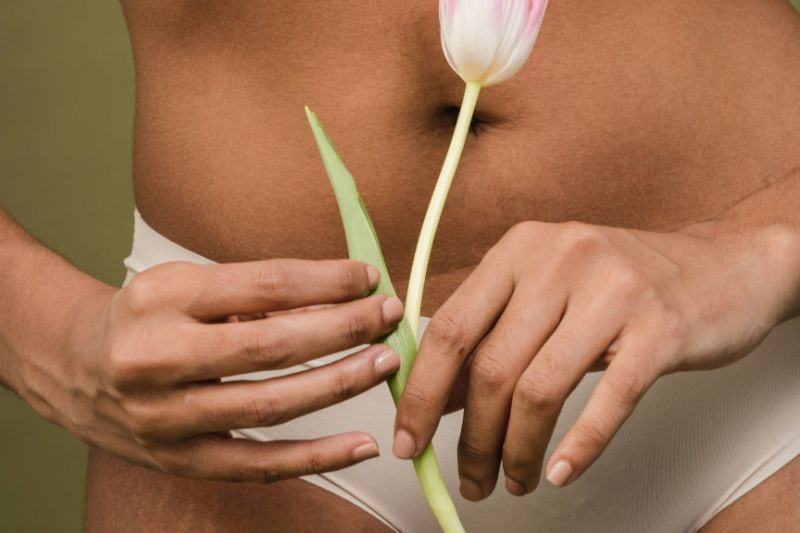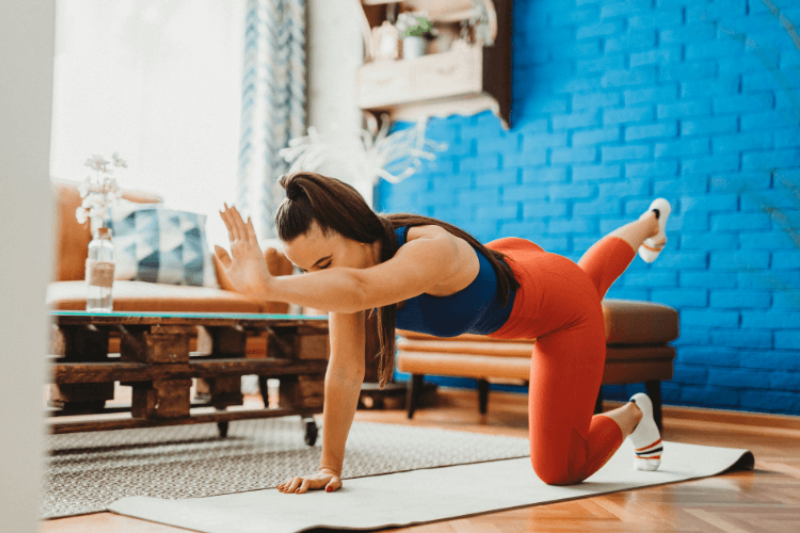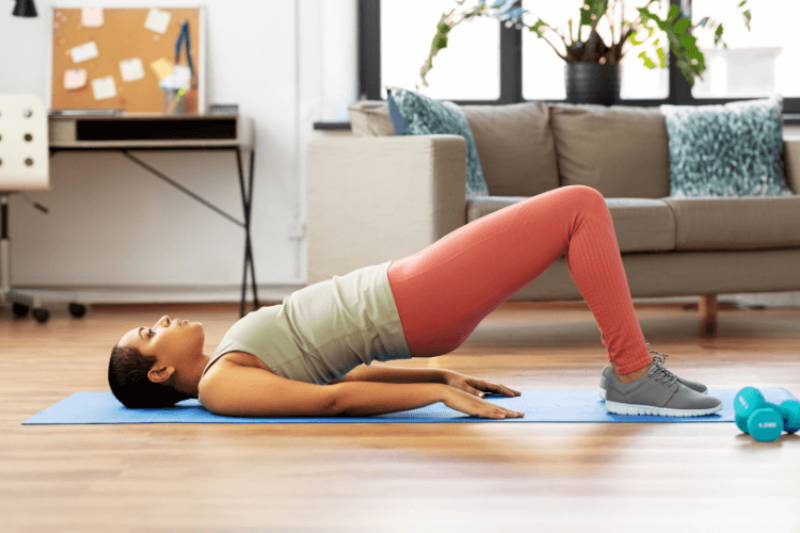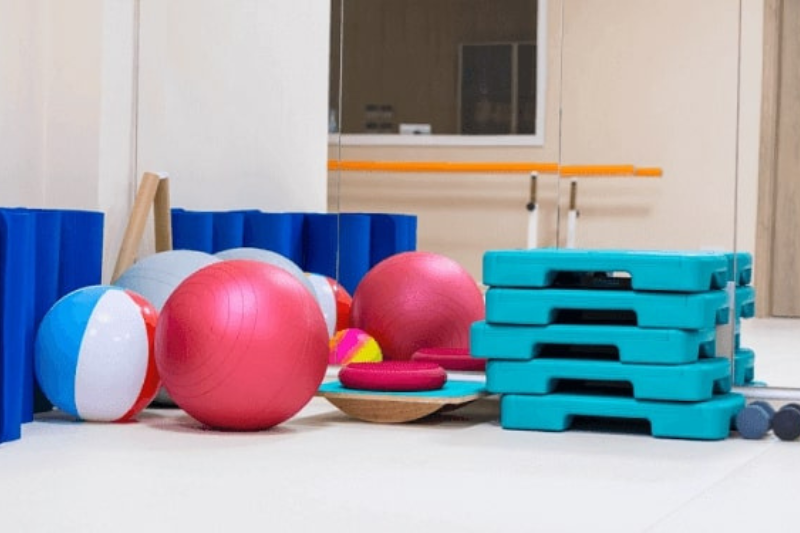
The best workouts for strengthening your Pelvic Floor
The pelvic floor plays a crucial role in our daily life. It is important to have a strong and functional pelvic floor, capable of facing the constraints of daily life. Yes, even though it is invisible, the pelvic floor is a group of muscles. And like other muscles in the body, you need to work it out! So what are the workouts to focus on to strengthen your pelvic floor? Which ones to avoid? And what are some good habits ?Let us tell you all about it!
What sports are favorable for strengthening the pelvic floor?
The pelvic floor, a small hammock located between the pubis and the coccyx, serves to support our genital organs and viscera. Often mistreated, it can eventually relax and cause many inconveniences: urinary leaks, organ prolapse, diminished sexual pleasure…

Practice gentle sports to workout the pelvic floor
To protect and strengthen the pelvic floor, it is recommended to practice gentle sports. These are sports without impact, where your muscles and joints are not stressed by “shocks”.
Avoid jumps or sudden movements… Slow down, pay special attention to your posture and the execution of your movements to be as efficient as possible.
By working in this way, you will activate and strengthen the deep muscles of the body. These are all the muscles related to posture and stature, which play a stabilizing role, unlike so-called “superficial” muscles (biceps, quadriceps…).
But don’t worry, gentle here does not mean weak! With these workouts, you can easily exercise, engage your cardiovascular system and even break a sweat!

4 “pelvic floor friendly” workouts
Walking to strengthen your pelvic floor
Simple, effective, and extremely easy to integrate into your routine, walking is an excellent workout to strengthen your pelvic floor. You don’t need to run a marathon, 20/30 minutes of daily walking will already make you feel the benefits!
Expert Tip: try to maintain a fairly fast pace, with longer strides to solicit the muscles of the legs, pelvis and more.
But be careful, your practice should remain gentle! Here, we are not looking for performance. You should be comfortable with the pace you set for yourself and, above all, enjoy it!

Pilates to tone your pelvic floor
The benefits of Pilates on the body and health are numerous. It is indeed the number 1 pelvic floor workout for caring for and toning your pelvic floor.
Why? Because this gentle exercise allows you to work on posture, breathing, and engaging your deep muscles. In short, everything that will help promote muscle building.
In practice, you should engage your pelvic floor with a voluntary contraction before (and during) each exercise. By doing this, you should feel your pelvic organs moving up towards your navel. Even if at first this may seem somewhat unclear or if you are not sure if you have the right sensations… Don’t panic!
Over the course of a few sessions, you will become more and more comfortable and you will truly become aware of the extent of the pelvic floor.
Eventually, this voluntary contraction will become a reflex that will accompany you in your other sporting activities but also in your daily life, during every effort.

Free Pelvic floor guide
Find out how to strengthen your pelvic floor to prevent bladder weakness and improve intimate pleasure! 💥
Swimming as a Pelvic floor workout
Exercising in the water also has many advantages for the pelvic floor. The pressure exerted on your muscles as well as on your joints is lower because, by floating, your body weighs less.
Keep in mind that in water, you only bear about one third of your Earth weight. Like in zero gravity, your movements are easier and your body is protected from the impacts the ground could cause.
In general, swimming movements are very effective in toning the muscles of the body. Especially those of the waist and hips, as you constantly have to use them to maintain balance and handle resistance while swimming.
Also, you could be mindful about voluntarily contracting our pelvic floor from time to time to strengthen it.
Another advantage: swimming is a sport accessible to everyone. There are very few contraindications for swimming, so regardless of your weight, age, or fitness level, you can go swimming!
Cycling or ‘biking’, a pelvic floor friendly workout
The seated position on a bike is perfect for the well-being of your pelvic floor. The pelvic muscles are supported by the saddle and experience less pressure while you pedal.
By working on your coordination and balance, cycling particularly engages the deep muscles of the abdominal belt and thus, promotes pelvic floor muscle strength.
But again, we are not talking about a very intense practice. This could have the opposite effect by causing jerks and, ultimately, be harmful for the pelvic floor.
Also, pay attention to your posture! If you distribute the unevenly between the upper and lower body, compensations could occur and you may not benefit from the advantages of cycyling.

Pelvic floor: Which woorkouts are best avoided?
As you may have understood, some practices can also put strain on your pelvic floor. To preserve your pelvic floor as much as possible, you should avoid high-impact sports to strengthen your pelvic floor. They will involve jumps such as
- Jump rope
- Running
- Athletics
- Handball
- Trampoline
- Crossfit…
With each impact, your organs are pushed downwards. As a result, they exert additional pressure on your pelvic floor, which can weaken it over time. But don’t worry, not all workouts need to be avoided!
To be able to practice them safely, you must pay attention to adopting the correct postures and techniques. For example, contracting your pelvic floor before each exertion to protect it.
How to protect your pelvic floor when working out?
Regularly train your pelvic floor
Protection of your pelvic floor starts with being aware of it and knowing it well: knowing how to contract it and how to relax it.
Kegel exercises are an excellent way to strengthen your pelvic floor. It involves a series of contractions and relaxations of the pelvic floor to be practiced regularly.
Pelvic floor rehabilitation is also an excellent method. It can be done with a healthcare professional or at home. There are many pelvic floor physical therapy exercises to be done at home, with or without equipment.
Another effective way to strengthen your perlvic floor at home is to use a connected biofeedback trainer like the Emy device. This technology allows you to visualize your contractions in real time on your smartphone. And one of the main advantages is that you can track your progress and evolution over time.

Free Pelvic floor guide
Find out how to strengthen your pelvic floor to prevent bladder weakness and improve intimate pleasure! 💥
Adopting a healthy lifestyle
When it comes to the pelvic floor, not 2 women have the same pelvoc floor strengths and weaknesses . Indeed, there are many factors that affect the tonicity of the pelvic floor. Some can be acted upon, others cannot.
Uncontrollable factors
Among the uncontrollable factors that impact our pelvic floor, we can mention, for example:
- Age and natural tissue aging
- Medical history
- Genetics and hereditory factors
- Pregnancies and childbirth..
It is quite easy to understand why it is not possible to fight against all these factors and the effects they have on our pelvic floor.
Fortunately, there are other modifiable elements on which we can act to protect our pelvic floor

Controllable factors
There are also other so-called factors that you could control which influence pelvic muscles. As opposed to non-modifiable factors, these are elements that we can control, adapt, or master.
We have found the following among others;
- Smoking
- Body weight (overweight)
- Workouts
- Nutrition
- Hydration
Adopting a healthy lifestyle is therefore one of the best tips if you want to preserve your pelvic floor during sports practice!
Adapting your sports practice to your condition
Finally, to protect your pelvic floor when working out, it is important to have a sports practice adapted to your level. This includes the choice of sport, the load, and the intensity of the exercise. It’s better to start slowly and increase gradually.
And above all, if you experience urinary leaks during your sports activities, don’t despair. Remember that you are not alone. More than 1 in 2 athletes suffer from incontinence! It is simply a matter of adapting your sports practice and following some basic guidelines such as maintaining good hydration.
For example, some women place a pessary in their vagina before exercising and remove it afterwards. This helps temporarily prevent some leaks and can be an option to consider in the short term. In the long run, the most effective solution to prevent urinary leaks during exercise will always be to strengthen your pelvic floor.


